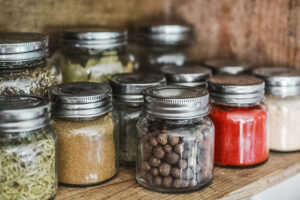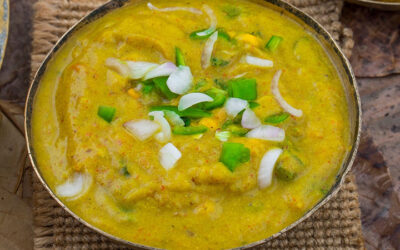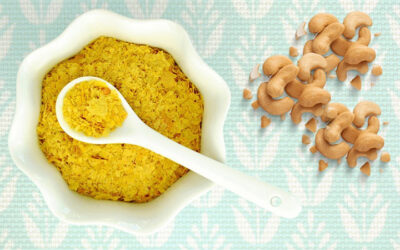 Benjamin Franklin was not wrong when he said “by failing to prepare, you are preparing to fail” though, with all due respect, I prefer my slightly sunnier version; “when we are prepared, we afford ourselves an opportunity to thrive.”
Benjamin Franklin was not wrong when he said “by failing to prepare, you are preparing to fail” though, with all due respect, I prefer my slightly sunnier version; “when we are prepared, we afford ourselves an opportunity to thrive.”
The initial transition to a whole food plant-based lifestyle can feel restrictive and overwhelming. We tend to focus on what we’re removing instead of what we’re adding in: “If I can’t have chicken or beef, what will I eat?” The reality is that there are over 20,000 edible plants on earth and on average we eat less than 20 of them per week!
Mindset plays a really big role in making the shift. When we change our internal dialogue from “I can’t eat that” to “I choose to eat this,” it’s a complete game-changer.
I know from personal experience as a wife and mother that my family makes the best decisions on what to eat when they are presented with the best options. Fill a cupboard or fridge with high sugar, high fat, salty, processed foods that can be ready in 60 seconds or less and I guarantee those will be eaten first and most often. But, fill a kitchen with fresh, prepped, whole foods and a pantry full of easy staples and you’ll soon watch your family make better and healthier choices.
When we have better options, we make better choices.
Transitioning to a whole food plant-based diet can also seem expensive, but the foundation of most meals are pantry staples and some of the least expensive, most nutrient-dense foods on the planet. Some variation of rice and beans has been a meal staple for some of the longest-lived cultures in the world. When we build upon this basic food foundation – health, culture, community and accessibility can triumph.
In order for you to prepare your kitchen with the best basic foundation, we’re going to break down our recommendations for properly stocking the pantry for your best chance at a successful transition.
Before we begin, there are two really important things to be mindful of.
- This is about progress, not perfection. You’re going to have slip-ups, don’t beat yourself up, just get back on the road and continue forward.
- Do not go out and buy everything on this list – you will likely end up throwing stuff away because you never got around to using it. Put a checkmark next to the items that resonate with you and that you already enjoy eating/using and make sure your pantry is stocked for success!
Pantry Staples by Category
Beans & Legumes: Dried or Canned – whichever ones you like best in a form you’ll use most often is the key. Beans are loaded with both protein and fiber making them a superior replacement for animal protein which contains no fiber whatsoever. Our favorites include:
▢ Black Beans ▢ Great Northern Beans ▢ Chickpeas ▢ Kidney Beans
▢ Pinto Beans ▢ Split Yellow Mung Beans ▢ Red Lentils ▢ Brown/Green Lentils
Grains: The world is filled with refined grains but we’re encouraging you to bring in more Whole Grains into your life. Whole Grains provide essential nutrients and fuel our bodies and brains. Carbs have a bad reputation but we’re not talking about donuts and white rice here, whole grains are so incredibly good for you and so incredibly versatile. Our favorites include:
▢ Quinoa ▢ Wild Rice ▢ Farro ▢ Oats ▢ Barley ▢ Millet ▢ Whole Wheat Couscous
▢ Brown Rice ▢ Freekeh ▢ Amaranth ▢ Buckwheat ▢ Bulgur Wheat
Nuts & Seeds: Raw nuts and seeds are great sources of protein, fiber and healthy, whole-food fats. They can easily be added to baked goods, smoothies, sauces, sprinkled over salads and sandwiches or simply snacked on as is. The raw nuts and seeds we use most often are:
▢ Flax Seeds ▢ Chia Seeds ▢ Hemp Seeds ▢ Pumpkin Seeds ▢ Cashews
▢ Walnuts ▢ Brazil Nuts ▢ Sunflower Seeds ▢ Sesame Seeds ▢ Almonds
Noodles & Pasta: A big bowl of pasta sure does hit the spot and being plant-based doesn’t change that fact! We opt for whole grain and/or legume-based options such as:
▢ Whole Wheat Spaghetti ▢ Red Lentil Penne ▢ Buckwheat Soba ▢ Shirataki Noodles
▢ Brown Rice Pad Thai Noodles ▢ Chickpea Fusilli
Condiments & Misc: There are so many incredible flavor enhancers out there but most are filled with unpronounceable ingredients, more sugar than you’d ever guess and are loaded with salt. Here are a few of our trusty regulars:
▢ Nutritional Yeast ▢ Veg Bouillon/Veg Broth (no/low sodium) ▢ Seaweed Gomasio
▢ Tahini ▢ Low Sodium Tamari/Soy/Aminos ▢ Various Vinegars ▢ Maple Syrup
▢ Soy Curls ▢ Canned Tomatoes ▢ Canned Coconut Milk ▢ Dates
▢ Nut/Seed Butters – plus herbs & spices like; Turmeric, Cumin, Coriander, Garlic, Ginger & Cinnamon.
Once you have these foundational staples in your house it’s much easier to grab a few fresh or frozen ingredients and whip up a healthy meal – yup, frozen fruits and veggies are great!
- A simple salad, soup or stir fry can be easily elevated and made into a healthy and satisfying meal by adding Beans, Grains and Seeds.
- A standard bowl of pasta can be made far more nutrient-dense by choosing Whole Grain Noodles and adding in Lentils, fresh veggies and Nutritional Yeast.
- Soy curls can be swapped in for a delicious plant-based version of chicken adobo or even orange chicken.
- Cashews, Nutritional Yeast and a bit of Vinegar can be used to make an easy and outrageously delicious non-dairy sour cream to use on jackfruit tacos or baked sweet potatoes with beans and veggies.
- Chia Seeds or Flax Seeds can add vital omega-3’s to your smoothies but can also be used to replace eggs when you’re baking!!
- Oats, Dates, Cinnamon, and Coconut Milk make for a delicious treat or a decadent breakfast.
As you can see, a plant-based diet is the antithesis of restrictive – in fact, once you really get into it, you’ll soon discover that it is about living in and with abundance and we here in Santa Barbara are so very privileged to live in a climate that grows such a variety of foods year-round.
by Emma Malina
Emma Malina is a plant-based nutrition educator and food-skills instructor based in Santa Barbara, CA who empowers individuals and families worldwide to optimize their health and prevent chronic disease through nutrition education, cooking classes, coaching, and online resources through her business Basking in Goodness.
Delicious Golden Dal
Delicious Golden Dal Lentils are one of the most satisfying ingredients we can think of for any dish – and this Golden...
Cashew Parmesan
Cashew Parmesan Looking for a plant-forward way to top your pasta or pizza? Try this cashew parm recipe! The texture...
Mosher Foundation Support Drives Growth In 2022
Rooted Santa Barbara County is spreading roots in 2022 thanks to a transformational grant from the Mosher Foundation!...
Supporting Our Work - We’re currently an all-volunteer organization and we see incredible room and need to grow over the coming year. We understand that this time has enormous challenges for everyone, so while we’ll be seeking support to help roll our vision forward, we’re also thinking creatively to keep our costs low to efficiently build resources and deliver programming at low to no cost to our community. If you’d like to support our work, we hope you’ll consider making a donation to one of our giving programs through our community partner, the Santa Barbara Foundation!



